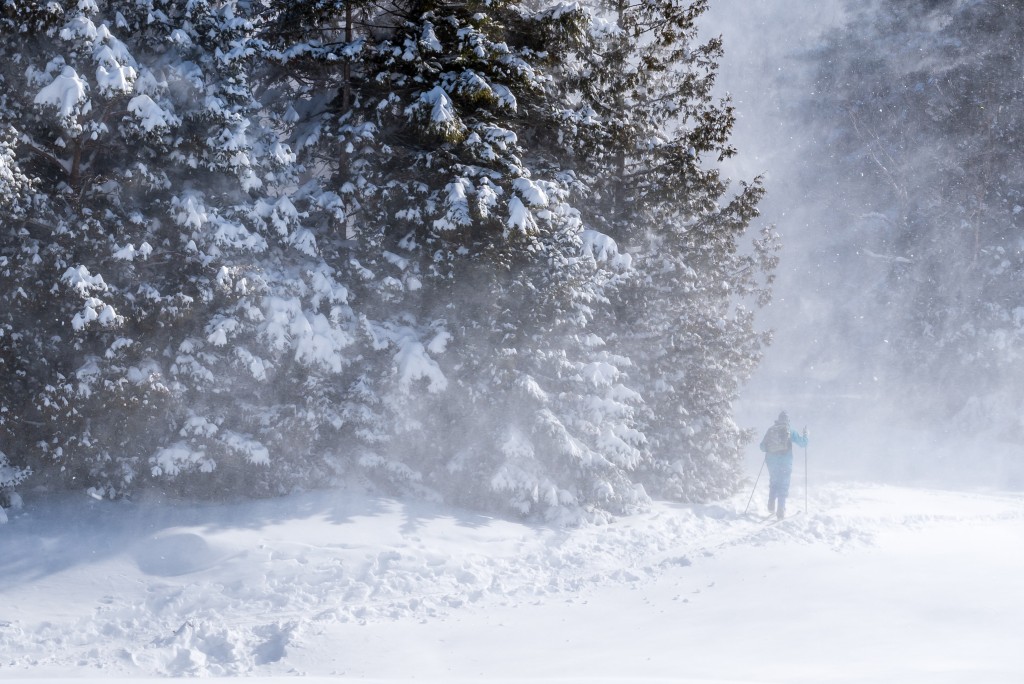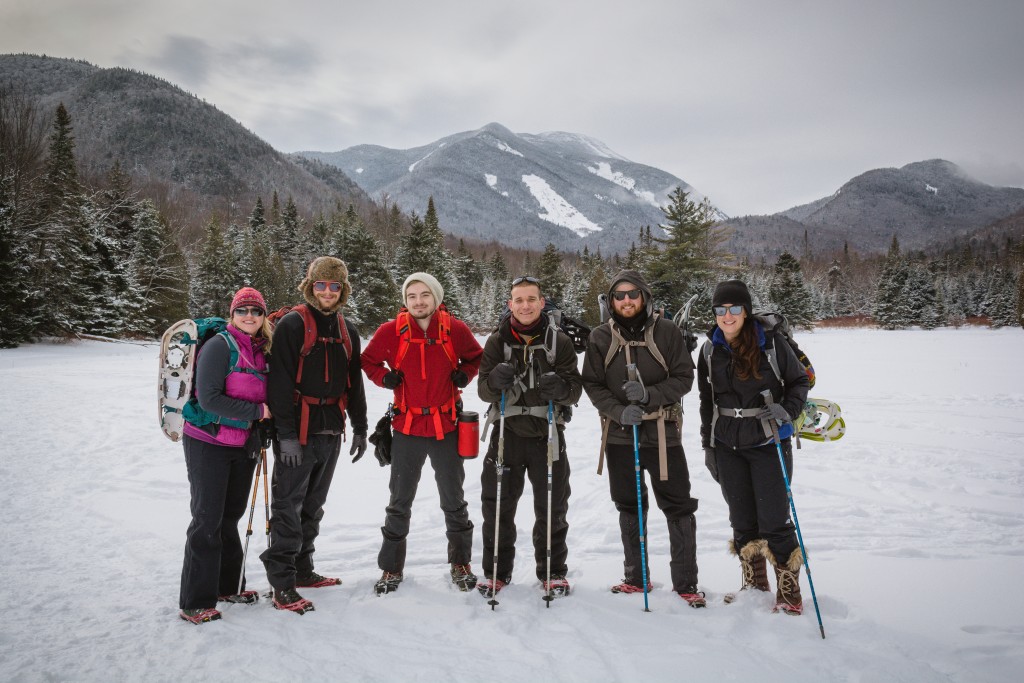Winter Hiking: Essential Considerations, Part One
Winter Hiking: Essential Considerations, Part One
By Noah Haber, High Peaks Information Center Assistant Manager
Getting outside during the winter yields a different type of beauty and appreciation for the natural world. This is grounded by the harsh and humbling conditions these months brings upon us. Consistent subzero temperatures, bare rock and vegetation coated in rime ice, hurricane force wind speeds (sometimes even in excess of 100 mph!), blizzards and ice storms, are just some of the frequent and marvelous hazards exhibited in the winter months in the Adirondacks.
Recognizing the heightened risks of outdoor recreation during the winter is paramount to the overall safety and success of the adventure you wish to set out on. For first-time winter recreators, figuring out where to start or how to prepare for such an endeavor can be a daunting and difficult task. Here are three important questions to ask yourself before you head out to make your trip safe and fun for everyone involved.
Did we pick a hike that’s appropriate for all members of our group?
Starting off, it is important to identify the skill level and physical ability of all group members and design an itinerary appropriate for everyone. This may seem obvious, but it is worth asking yourself “Is this something that everyone in my group can do safely and have fun doing?”
If there are people in your group who have very little winter experience it is recommended that you start with something smaller and shorter so they can practice snowshoeing or using micro-spikes. Snowshoeing is pretty intuitive, but it’s not always enjoyable when you are doing it the first time on a hike, particularly if that hike is already challenging for you and your party. Additionally, starting small will also allow you to identify issues with your packing or layering that you might have missed while preparing at home. This way, if something goes wrong, you aren’t too far from the trailhead or a safe bailout point.
What is the weather forecast?
In the days leading up, the night before, and morning of, remember to check the weather and keep an eye out for any warnings or hazards. Being caught in bad weather, such as a white out, which happens frequently in the alpine zone in winter, can be a disorienting and dangerous situation.

Checking the weather in advance of your trip will ensure you’re aware of the conditions and can help you avoid a perilous scenario. If the summit forecast is calling for exceedingly high winds and snowfall it might be best to postpone the trip a day or two or choose a hike at lower elevations. It is also important to be aware of the spontaneity of weather at higher elevations. Conditions can change rapidly in high elevations and weather forecasts are not always completely accurate, so it is always best to be prepared for the worst.
Can we keep ourselves warm?
Another important aspect of recreating in the wintertime is proper layering. Ambient temperatures in the Adirondacks fall below zero fairly regularly, and windchill factors can take the temperature far lower; the coldest wind chill temperatures recorded in the Adirondacks occurred on the summit of Whiteface at –114 degrees Fahrenheit. Exposed skin would be frostbitten in just minutes in those sorts of conditions.
Concurrently, sweating excessively during the winter can be dangerous especially if you become immobile for an extended period. Sweat can freeze quickly, especially above tree line where there is lots of exposure. Due to this, an active layering system is crucial. Active layering involves a series of non-cotton clothing layers, including hats and gloves, that can be stripped off and put back on quickly to keep your body at a comfortable temperature. Sometimes working out the right system of layering for an individual can take some time which is why it’s always nice to start small and figure out those intricacies before venturing out to those more difficult, exposed, and longer hikes.
It’s important that these layers be made of a fabric that retains insulating properties when wet, such as polyester and wool. Cotton, rayon, and silk are all fabrics that lose insulating properties when wet, which can dramatically accelerate your risk of hypothermia. You can read more about our recommended day-hike layering system here, and about the dangers of cotton here.
As you plan ahead and prepare for your winter adventures, feel free to reach out to local agencies and organizations with any questions you may have! You can reach our staff at the High Peaks Information Center via ADK’s social media Facebook and Instagram accounts, by phone at 518-523-3441 ext. 121, or by email at hpic@adk.org for advice on hiking or recreating in the High Peaks Region of the Adirondacks.
ADK also offers in-person and online winter outdoor skills programs, which you can learn more about here.

Related
ADK Trip Planning Sessions
Need help planning your backcountry adventure? Schedule a personal, online session with an ADK staff […]
Benefits of Visitor Use Management
Since the creation of some of the first parks and protected areas in the United […]
Mud Season: Quick Facts
Just what is mud season? Running anytime from late March into mid-June—it varies each year […]
Spring on the NPT
by Jeffrey Case In the Spring a fuller crimson comes upon the robin’s breast; In the […]

